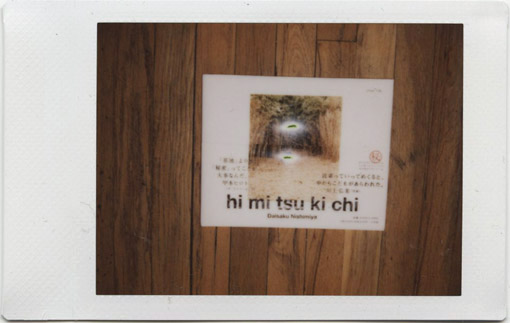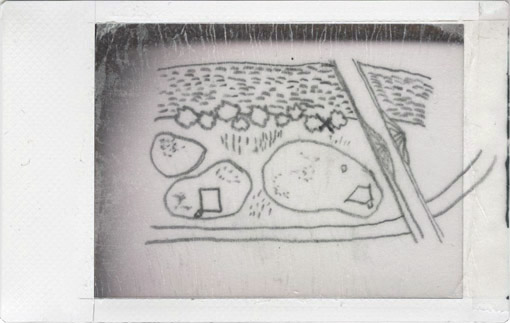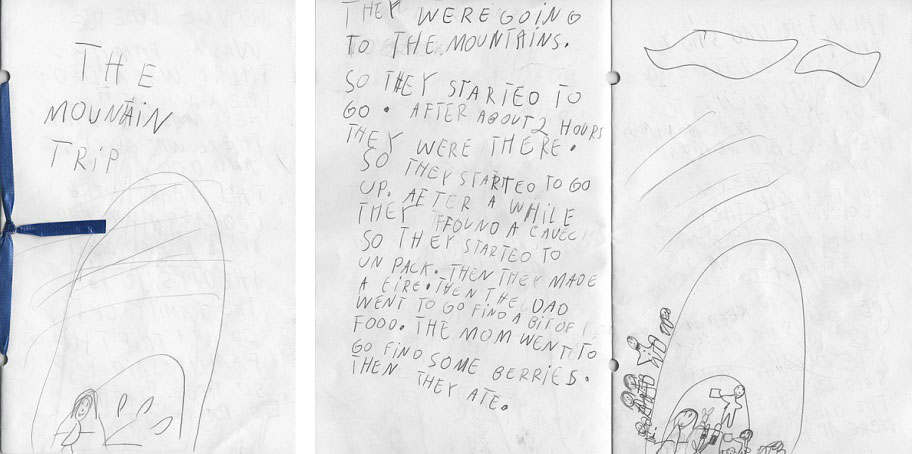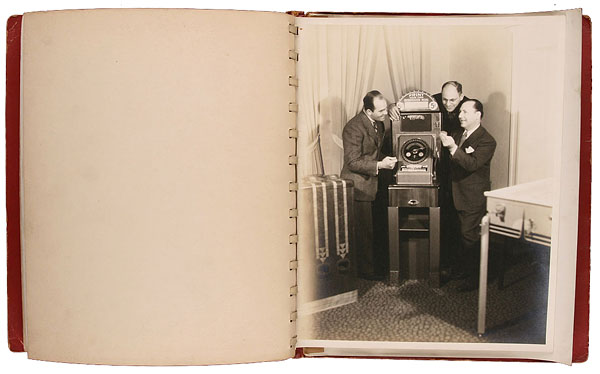In Martin Parr & Gerry Badger’s History of The Photobook, much attention is given to Corporate Photobooks and Propaganda Photobooks. Thinking about Sergio Larrain’s charitable photobook, I’m wondering if this might not be another interesting subset of photographic literature. Can you think of other books that would fit into this catagory?
Sergio Larrain’s untitled ‘Home’ book
In Jeffrey Ladd’s review of Nothing But Home, he mention’s my recent book, Allowing Flowers (also reviewed by Jeff here). Soon after, Sébastien Girard emailed me. He wrote:
Reading about Allowing Flowers, it immediately made me think of an unordinary book I found in Santiago de Chile. An unknown book by one of your Magnum colleagues: Sergio Larrain. A few years ago I decided to go on a trip to Chile to meet him without knowing exactly where he was living, without appointment…A very hazardous trip. On my way I found this charity book! A good sign for the journey. Amazing layout! Amazing photographs! Something close to your project. I look forward to see your reaction.
Well, my reaction was half excitement, half jealousy. What a find!
See more images here.
![]()
Sébastien Girard: Nothing But Home
 Those following Little Brown Miscellanea know that I recently acquired Sébastien Girard’s book, Nothing But Home. There has been a lot of buzz about this book lately. Markus Schaden listed it in his Top Ten list. And Jeffrey Ladd recently wrote an enthusiastic review. I too was really taken with this book. It reminds me of another recent favorite, Michel Campeau’s Darkroom. Just as Campeau explored the cramped jerry-rigging of darkrooms with the eye of a longtime user, Girard photographs his home renovation with the homeowner’s mix of affection/exasperation.
Those following Little Brown Miscellanea know that I recently acquired Sébastien Girard’s book, Nothing But Home. There has been a lot of buzz about this book lately. Markus Schaden listed it in his Top Ten list. And Jeffrey Ladd recently wrote an enthusiastic review. I too was really taken with this book. It reminds me of another recent favorite, Michel Campeau’s Darkroom. Just as Campeau explored the cramped jerry-rigging of darkrooms with the eye of a longtime user, Girard photographs his home renovation with the homeowner’s mix of affection/exasperation.
The remarkable thing about Girard’s book is that it is, in fact, homemade. Self-published by Girard and printed in his hometown of Toulouse, the production value is exceptionally high. But with an edition of only 500 (and a special edition of 100 with print and red cover), this book retains a true homespun spirit.
More info about the book here.
The Three Wishes
After posting my daughter’s book, The Mountain Trip, my Aunt Beth sent me pictures of a book I made for my cousin when I was around 11 years old.
See the whole book here.
Instax Interview: Daisaku Nishimiya
I recently spent a month in Japan. I was there to make photos, but I also went to a lot of bookstores. Going into a bookstore in another country is complicated and quite funny since I was illiterate. My favorite find was a book titled, hi mi tsu ki chi, by Daisaku Nishimiya. Daisaku Nishimiya walked around Tokyo photographing children’s secret fortresses.
Along with these photos Daisaku Nishimiya also includes an aerial drawing of the location
I asked Daisaku Nishimiya a few questions about his work.
Carrie Thompson: Tell me a little about yourself, are you a full-time photographer? What projects have you made other then hi mi tsu ki chi?
Daisaku Nishimiya: Yes, I am a full-time photographer. The projects I have made other than hi mi tsu ki chi are “a man” in 2004 and “mocktail” in 2007. (see photos here)
CT: Can you tell me what hi mi tsu ki chi means in English?
DN: Well, “hi mi tsu ki chi” signifies “a secret and precious place” and also “a secret place only for me, or for us”. Literally, himitsu means a secret, and kichi means a base in Japanese. For children, himitsu kichi means a secret fortress or a secret hiding place.
CT: Why did you decided to make a book a children’s secret fortresses?
DN: I remember the feeling of deep emotion at the moment when I heard the word “himitsu kichi.” It awakened many memories, colors and scenes of my childhood, which must have become obscure and may be a fantasy I felt as I have grown up. I was deeply moved. The sound of the word “hi mi tsu ki chi” excited my imagination. If children of today, especially those in a large city of Tokyo, are still creating himitsu kichi, I want to record them with photos.
CT: When you were young did you have a secret fortress?
DN: Yes, I did have a secret fortress when I was a child. I think it was certainly nothing great like the ones seen in my book. Yet, it must have been a precious and comfortable place.
CT: I really enjoy the drawings in the book, did do the drawings? Why did you decide to add these drawing to the book?
DN: Adding the drawings of maps was the idea of the editor of the book. The book is made up of a combination of a photo of a scene in which a secret fortress is hiding and that of the secret fortress itself. It seemed nice to add a drawing of a map for each scenic photo to show the place of a secret fortress and marking with X. We (the editor, the art director and I) discussed size and density of each map as well as its position to be put in a page. We had the designer redraw the drawings from my rough sketches. I am glad that you enjoy the drawings, which I also enjoy.
CT: Can you tell me what you are working on now?
In my usual activities, I always take a photo of whatever appeals to me. Photos of any genre; snaps, portraits, natural scenes, etc. I have recently been taking photos of “kids, children” and “scenes of Tokyo and its suburbs” a lot. I would be very happy if I could connect various photos I am taking with a theme as I have done in “hi mi tsu ki chi”.
You can find hi mi tsu ki chi here and here
and more images here
An inspiring pair.
Hey, Les.
Someone just sent me this link, about a discussion out west between a photographer and a woman who lost both her legs when she was one, but managed to grow up to be gorgeous and athletic and totally awesome anyway. I was moved, and inspired–almost wish I could have heard them talk. Even the pictures of the photographer seem appealing.
Am I just going soft around the edges, or what?
Yrs,
Birthday Book, part 5 (The Mountain Trip)
When I got home from Las Vegas, my daughter Carmen, 7, gave me the best birthday book ever. I think she was inspired by Lost Boy Mountain. To see the whole book, go here.
I won’t sell it for $4,000.
Social Shrooming
Want to see which plaid shirt the LBM team is wearing today? Visit Little Brown Miscellanea on Tumblr.
And befriend us on FaceBook. I know we aren’t the creative directors of Polaroid, but c’mon.
Birthday Book, part 4 (Slot Catalogue)
I recently described the making of my Las Vegas Birthday Book (and sculpture). Soon after I traded it away to the rare book dealer, Harper Levine. My timing was excellent as Harper was just beginning his Annual Book Sale (ends this Thursday, January 14th).
For poetic reasons, the key book I acquired was a 1940’s trade catalogue by a slot machine manufacturer. What I like about the book is the way the machine workers look like weary gamblers while the company owners resemble casino fat cats.
I left Vegas feeling like one of those tired machinists. But back home with new books, I’m starting to feel like Steve Wynn.
More images of the casino book here.
My great-great-great-great-great uncle Aert!
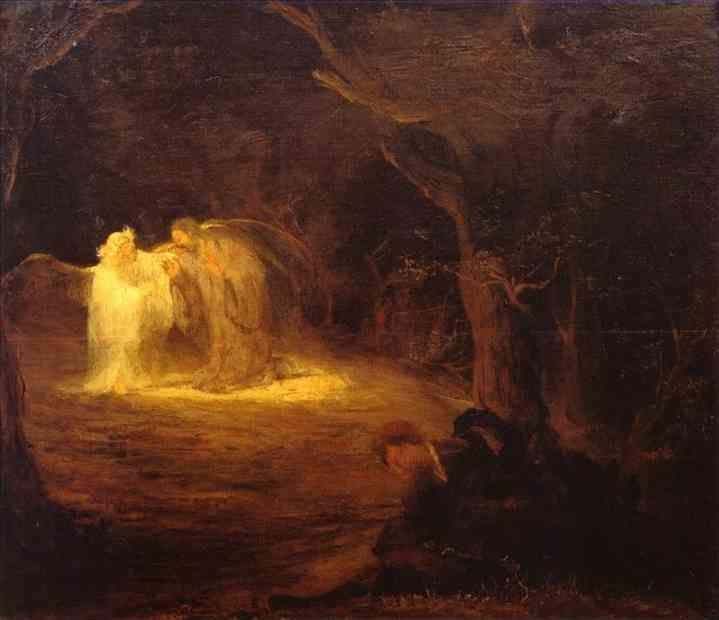
Hey, Les. Check this out.
While his companions (the apostles Peter, James, and John) sleep in a garden, a troubled man (Christ, contemplating his imminent crucifixion) is consoled by an angel. Aert, who was a devoted student of Rembrandt, rendered the central figures with sympathy and focus, yet his view from within the woods, behind the insensible, indistinct mound of sleeping men, maintains distance. Was that skepticism? Modesty? Reverence? A man’s trials are his own, yet they need not be borne alone, and they are often witnessed and remarked on from afar. And yes, many of us late-night seekers long for an angel of deliverance.
There’s a feeling of a cave here, too, or at least a cove. So many of our LBMs suffer in silence. Did Aert depict their utopia?
I like the fact that he did Jesus in such a non-fussy way. Just another burdened fella trying to sort it all out.
Yrs,



